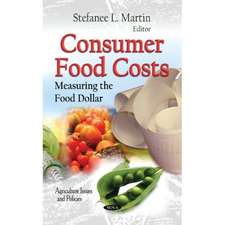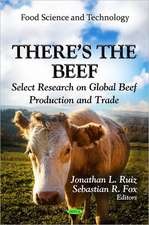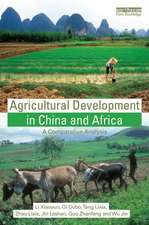Conservation Farming in the United States: Methods and Accomplishments of the STEEP Program
Editat de Edgar Michalson, R.I. Papendick, John Carlsonen Limba Engleză Paperback – 17 oct 2019
| Toate formatele și edițiile | Preț | Express |
|---|---|---|
| Paperback (1) | 485.18 lei 6-8 săpt. | |
| CRC Press – 17 oct 2019 | 485.18 lei 6-8 săpt. | |
| Hardback (1) | 1112.17 lei 6-8 săpt. | |
| CRC Press – 29 dec 1998 | 1112.17 lei 6-8 săpt. |
Preț: 485.18 lei
Preț vechi: 570.80 lei
-15% Nou
Puncte Express: 728
Preț estimativ în valută:
92.85€ • 95.09$ • 77.24£
92.85€ • 95.09$ • 77.24£
Carte tipărită la comandă
Livrare economică 18 martie-01 aprilie
Preluare comenzi: 021 569.72.76
Specificații
ISBN-13: 9780367400071
ISBN-10: 0367400073
Pagini: 256
Dimensiuni: 156 x 234 x 15 mm
Greutate: 0.34 kg
Ediția:1
Editura: CRC Press
Colecția CRC Press
ISBN-10: 0367400073
Pagini: 256
Dimensiuni: 156 x 234 x 15 mm
Greutate: 0.34 kg
Ediția:1
Editura: CRC Press
Colecția CRC Press
Cuprins
A History of Conservation Research in the Pacific Northwest, A Model for Solving Conservation and Environmental Problems. Measuring and Modeling Erosion and Erosion Damages, Residue Management Issues for Conservation Tillage Systems, Conservation Cropping Systems and Their Management, Integrated Pest Management for Conservation Systems, Developments in Equipment for Conservation Farming, The Adoption of Soil Conservation Practices in the Palouse, A Systems Approach to Conservation Farming, Conservation Policy Issues, Transferring Conservation Farming Technologies to Producers.
Notă biografică
Edgar L. Michalson, Robert I. Papendick, John E. Carlson
Descriere
Conservation Farming in the United States: The Methods and Accomplishments of the STEEP Program explains the success of the STEEP (Solutions to Economic and Environmental Problems) conservation project, currently in its third decade, which focuses on the Palouse and the western Pacific Northwest. Topics include integrated pest management; equipment for conservation farming; and conservation farming technology transfer to producers. Co-published with the Soil and Water Conservation Society, it details the importance of the STEEP model, including its history and development, and illustrates the potential for STEEP to serve as a global model for conservation farming.










